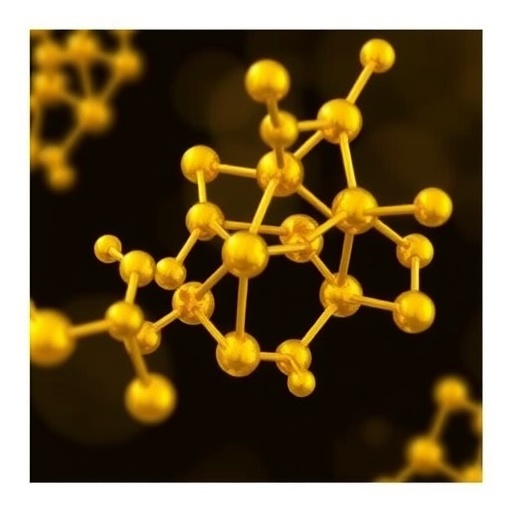In the sphere of reproductive biology, the intricate relationship between environmental factors and male fertility is an ongoing concern. A recent study led by researchers Joseph I.E., Festus J.I., and Ajibade T.O. reveals alarming insights into how exposure to cadmium—a toxic heavy metal—during critical developmental periods such as gestation and lactation adversely affects male rat fertility. The findings presented in their publication, “The Complicity of DAAM1, PTMA, RSPH6A, and Steroidogenic Genes in the Fertility of Male Rats Exposed to Cadmium During Gestation and Lactation: Attenuation by PREOG,” have significant implications for understanding the genetic underpinnings of reproductive health.
Cadmium exposure has been linked to a variety of adverse health outcomes, particularly in reproductive health. The researchers meticulously designed the study to assess how cadmium influences the expression of key genes involved in steroidogenesis and fertility during sensitive developmental stages. Notably, the potential mitigation effects of a neuroprotective agent called PREOG were also investigated, providing a glimmer of hope for therapeutic interventions.
During their research, the team established a clear framework for evaluating the fertility impacts of cadmium. They meticulously analyzed changes in gene expression associated with DAAM1, PTMA, and RSPH6A in the testes of male rats. This multi-gene approach allowed for a comprehensive understanding of how cadmium disrupts normal biological processes necessary for male reproduction.
DAAM1, or Dishevelled associated activator of morphogenesis 1, is primarily known for its role in cellular signaling pathways crucial for development. However, its involvement in fertility has been less explored until now. The study found that cadmium exposure upregulates DAAM1, potentially leading to aberrant signaling pathways that interfere with sperm production and overall fertility in male rats. This finding raises concerns about the implications of environmental toxins on the molecular pathways governing reproductive health.
PTMA, or Prothymosin α, functions in cell proliferation and apoptosis, both of which are critical for normal spermatogenesis. The study revealed that cadmium exposure alters the expression levels of PTMA, suggesting that disturbances in cell cycle regulation may contribute to decreased fertility outcomes. This modulated expression highlights the complex interplay between environmental toxins and genetic factors in male reproductive health.
RSPH6A, involved in the formation of motile cilia and flagella, plays a vital role in sperm motility. The researchers observed that cadmium negatively affected the expression of RSPH6A, indicating that exposure to this heavy metal might compromise sperm function and, consequently, male fertility. This emphasizes the need to delve deeper into the molecular mechanisms at play and how they could be targeted in potential therapeutic strategies.
In addition to assessing gene expression changes due to cadmium, the researchers also explored the effects of PREOG, a compound with neuroprotective properties. The results were promising; PREOG administration appeared to mitigate some of the negative impacts of cadmium exposure on the aforementioned genes. This finding opens the door for further research on PREOG as a protective agent against environmental toxins, not only in male reproduction but possibly in other health domains as well.
The methodology employed in the study was rigorous, involving controlled exposure scenarios and well-documented processes for assessing fertility outcomes. Male rats were subjected to cadmium exposure during gestation and lactation, and various assays were conducted to evaluate their fertility potential post-exposure. The careful design minimizes potential confounding factors and strengthens the legitimacy of the findings.
The results contribute to a growing body of literature emphasizing the importance of environmental health in reproduction. Given rising concerns about cadmium’s ubiquitous presence in industrial settings and food supply chains, the need for public health interventions becomes increasingly critical. Understanding how cadmium influences reproductive biology can guide policy formulations aimed at protecting vulnerable populations from harmful exposures.
Additionally, the research invites a broader discussion on the importance of studying gene-environment interactions in reproductive health. By focusing on specific genes, like DAAM1, PTMA, and RSPH6A, the study not only provides insights into male fertility but also underscores the necessity for comprehensive investigations into how other environmental factors may influence reproductive outcomes.
Moreover, the potential for utilizing substances like PREOG as therapeutic agents could pave the way for new strategies in reproductive medicine. As researchers continue to untangle the complexities of genetic and environmental influences, there lies hope that innovative treatments can be developed to combat the detrimental effects of pollutants like cadmium.
Ultimately, Joseph et al.’s work shines a spotlight on a pressing public health issue while also contributing valuable scientific knowledge toward the safeguarding of reproductive health. Their findings propagate a clarion call for further investigation into the intersection of environmental toxicology and reproductive biology, underscoring the need for multidisciplinary approaches to address these challenges effectively.
As society gradually awakens to the ramifications of environmental contaminants, studies like this one play an essential role in informing best practices and health guidelines aimed at preserving reproductive integrity. It’s a critical time for advancements in research that connect the dots between environmental exposures, genetic expression, and health outcomes.
With the broader ecosystem, including wildlife and human populations, facing escalating risks from pollution, understanding the mechanisms of cadmium’s effects on fertility becomes imperative. The implications are vast, suggesting pathways for intervention and highlighting the necessity for sustained public awareness campaigns against environmental toxins.
The ripple effects of this research transcending the laboratory could potentially influence future regulations, health advisory frameworks, and community education initiatives aimed at fostering safer environments conducive to reproductive health and well-being.
Subject of Research: The impact of cadmium exposure on male rat fertility and gene expression.
Article Title: The Complicity of DAAM1, PTMA, RSPH6A, and Steroidogenic Genes in the Fertility of Male Rats Exposed to Cadmium During Gestation and Lactation: Attenuation by PREOG.
Article References:
Joseph, I.E., Festus, J.I., Ajibade, T.O. et al. The Complicity of DAAM1, PTMA, RSPH6A, and Steroidogenic Genes in the Fertility of Male Rats Exposed to Cadmium During Gestation and Lactation: Attenuation by PREOG.
Reprod. Sci. 32, 2742–2762 (2025). https://doi.org/10.1007/s43032-025-01902-x
Image Credits: AI Generated
DOI: https://doi.org/10.1007/s43032-025-01902-x
Keywords: Cadmium, male fertility, gene expression, DAAM1, PTMA, RSPH6A, PREOG, environmental health.
Tags: Cadmium exposure effects on male fertilityDAAM1 gene role in fertilitydevelopmental stages and reproductive outcomesenvironmental toxins and male fertilitygene expression changes in steroidogenesisgestation and lactation effects on male ratsmitigating cadmium toxicity in reproductive systemsPREOG neuroprotective agent studyPTMA gene impact on reproductive healthreproductive health in male ratsRSPH6A gene and fertility implicationstoxic heavy metals in reproductive biology





